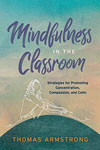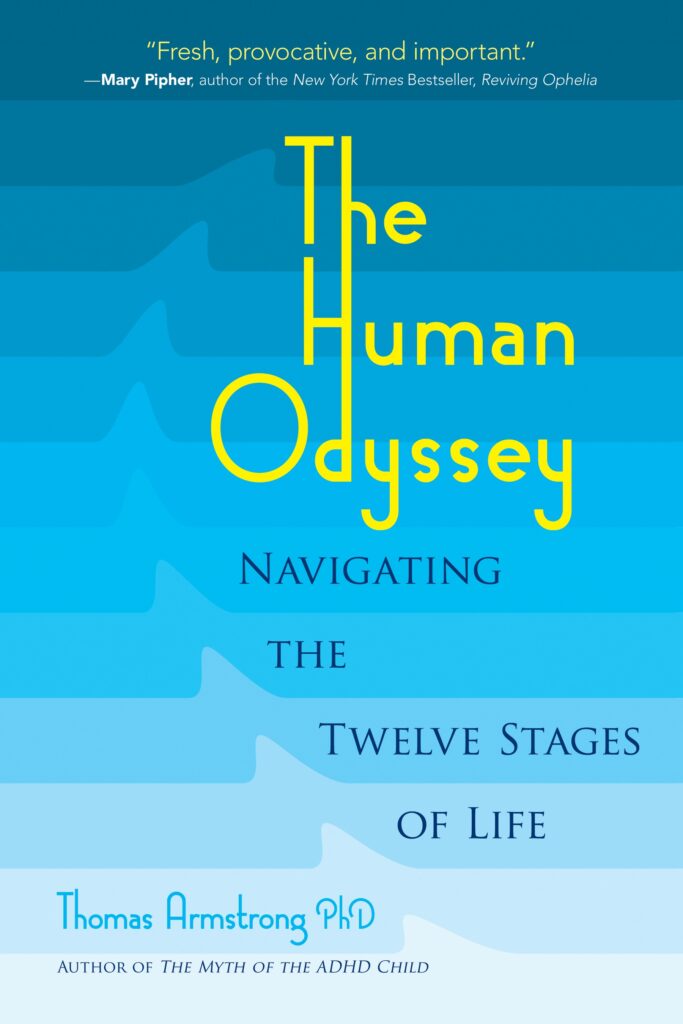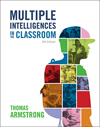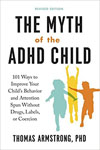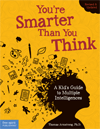 I have a new article just out today published by the website Arts of Thought, that discusses my psycho-spiritual views of the human life cycle. It suggests that we develop through the stages of life along two fundamentally different trajectories, one spiritual and the other physical. The physical journey of life is chronicled in most textbooks on developmental psychology. The spiritual journey, on the other hand, is talked about mostly by poets, mystics, shamans, and other spiritually-minded individuals. The article summarizes a number of ideas covered in my book The Human Odyssey: Navigating the Twelve Stages of Life. I hope you enjoy the article and share it with others!
I have a new article just out today published by the website Arts of Thought, that discusses my psycho-spiritual views of the human life cycle. It suggests that we develop through the stages of life along two fundamentally different trajectories, one spiritual and the other physical. The physical journey of life is chronicled in most textbooks on developmental psychology. The spiritual journey, on the other hand, is talked about mostly by poets, mystics, shamans, and other spiritually-minded individuals. The article summarizes a number of ideas covered in my book The Human Odyssey: Navigating the Twelve Stages of Life. I hope you enjoy the article and share it with others!
The Spiritual Odyssey: A New Vision for Developmental Psychology
Another problem with lifespan courses is that they are built almost entirely upon rational foundations, filling their pages with research studies loaded with coefficients and correlations and longitudinal analysis and the like. But real life isn’t just science and math, it’s art, literature, history, biography, mythology, sociology, anthropology, and much more, and it seems to me that any book about the human life cycle ought to incorporate these fields as well. Moreover, while most textbooks on human development focus on the biological, physical, social, emotional, moral and cognitive development of the growing child, adolescent, and adult, virtually all of them leave out the spiritual dimension. This concerns me a great deal because my own personal experience has emphasized to me the importance of the spirit in any account of human growth and transformation. When I was nineteen I went through a major psychological crisis that opened a window for me into the riches of the world’s religions, and in particular to the mystic traditions in each of them. In my twenties and thirties, I began to formulate a provisional theory of human development that would include the spiritual domain in an account of the human life cycle. In my forties, I began working on a book with the tentative title The Incredible Journey. This book eventually came out when I was in my fifties, and is called The Human Odyssey: Navigating the Twelve Stages of Life
In the book I suggest that there are two primary ‘’lines’’ or trajectories of development. One of those lines I call ‘’coming up from the body.’’ This is the journey that virtually all textbooks in developmental psychology take up. It chronicles our beginning as a one-celled organism or zygote, — what is essentially a piece of matter–and tells the story of the growth of that matter into a fetus, a newborn, an infant, a child, an adolescent, and an adult. All the theories of human development in this story—Piaget’s, Freud’s, Kohlberg’s, Erikson’s, and other lesser lights–deal with this journey of ‘’matter’’ as it becomes conscious and goes through increasingly complex and mature levels or ‘’stages’’ of cognitive, social, emotional, and moral development.
In The Human Odyssey, however, I argue that there is another line of development that doesn’t get mentioned in the textbooks. This I refer to as ‘’coming down from the spirit.’’ It is a story unknown to developmental psychologists, but which poets, mystics, shamans, and other spiritually-minded people from different cultures have referred to over a period of millenia. One of the best-known expressions of this story in the Western tradition is William Wordsworth’s poem ‘’Ode: Intimations of Immortality from Recollections of Early Childhood.’’ In the poem, Wordsworth refers to a time in his early development when life was more glorious, suffused with a deep richness. The poem begins:
There was a time when meadow, grove, and stream,
The earth, and every common sight,
To me did seem
Apparelled in celestial light,
The glory and the freshness of a dream.
It is not now as it hath been of yore;—
Turn wheresoe’er I may,
By night or day.
The things which I have seen I now can see no more.
Later on in the poem, Wordsworth becomes even more explicit about the grandeur of life’s beginning:
Our birth is but a sleep and a forgetting:
The Soul that rises with us, our life’s Star,
Hath had elsewhere its setting,
And cometh from afar:
Not in entire forgetfulness,
And not in utter nakedness,
But trailing clouds of glory do we come
From God, who is our home:
Heaven lies about us in our infancy!1
The standard college or university textbook on human development ignores this part of the story of life. In Eastern traditions, too, there are references to this hidden side of the human journey. The great Chinese sage Mencius, said that ‘’A great man is he who has not lost the heart of a child.’’ The Sufi mystic Hazrat Inayat Khan said that the child is an exile from Paradise, and that is why it’s first expression on earth is a cry. In the Middle Ages in the Kabbalistic traditions of Judaism, adepts carried out prophecy and divination activites by asking small children to stare into a crystal or mirror and describe what they saw there. In shamanic cultures, young children’s innocent words are taken seriously by holy men. Anthropologist Joan Halifax writes about such a culture: ‘’ . . . he [Sila, a desity] has another means of (communication) by sunlight and calm of the sea, and little children innocently at play, themselves understanding nothing. Children hear a soft and gentle voice, almost like that of a woman. It comes to them in a mysterious way, but so gently that they are not afraid, they only hear that some danger threatens. And the children mention is (casually) when they come home, and it is then the business of the (shaman) to take such measures as shall guard against the danger.’’2
We might say that in ‘’coming up from the body,’’ the human starts out small and grows big, while in ‘’coming down from the spirit,’’ the human starts out large (spiritually) and becomes small (trapped in the materialism of its culture). There is nothing wrong with the standard ‘’up from the body’’ textbook account of human development. It’s just incomplete. It leaves out a basic quality of being human: one’s spiritual nature. If we incorporate this spiritual account into a more complete model of the human lifespan, then we’re able to account for many more things (and more subtle things) that occur during the journey of life. We’re able to take account of reports from children about spiritual experiences they’ve had: memories of past lives (a relatively common occurrence according to psychiatrist Ian Stevenson3 ), archetypal dreams (the psychiatrist Carl Jung wrote about his own Big Dream as a child in his memoirs4 ), and glorious experiences in nature. Here’s one woman’s account, for example, of a ‘’peak’’ experience that happened to her when she was four or five years old:
‘’My mother and I were walking on a stretch of land . . known locally as ‘’the moors.’’ As the sun declined and the slight chill of evening came on, a pearly mist formed over the ground . . . Suddenly I seemed to see the mist as a shimmering gossamer tissue and the harebells (flowers), appearing here and there, seemed to shine with a brilliant fire. Somehow I understood that this was the living tissue of life itself, in which that which we call consciousness was embedded. . . In that moment I knew that I had my own
special place, as had all other things, animate and so-called inanimate, and that we were all part of the universal tissue which was both fragile yet immensely strong and utterly good and beneficent. The vision has never left me. It is as clear today as fifty years ago, and with it the same intense feeling of love of the world and the certainty of ultimate
good.’’5
These early experiences are often forgotten as children grow up and get enmeshed in daily activities and spend much of their time adapting to the society in which they happen to find themselves. Interestingly, though, it seems that the children we are most likely to label with some sort of diagnosis: ‘’attention deficit hyperactivity disorder,’’ ‘’dyslexic,’’ ‘’autistic,’’ ‘’gifted,’’ and so forth, are the kids who still remember some of their spiritual roots (research suggests, for example, the dyslexic kids perceive the world more holistically than typically developing kids, while ADHD kids become bored easily by the same old same old, and require new and exciting learning experiences and novel and living ways of relating to the world).
Adolescence is a time when the spiritual dimensions of life break through the rule-following habits of older children, and teens start to become preoccupied with spirituality, occultism, magic, and philosophical questions of existence. This is a time when they can get involved in religious cults, seek altered states of consciousness through drugs, and generate the first mature forms of artistic creativity (Mozart was 19 when he wrote his five exquisite violin concertos, Rimbaud had written his complete poetic works before the age of 20). Early adulthood, on the other hand, is a time when the spiritual core of a human being goes into hiding for many people, because the need at this time is to focus on adapting to the adult world: finding a job, securing a mate, developing a community of friends. Midlife, on the other hand, is a time in the lifespan when spirituality often erupts as a result of a crisis or a dissatisfaction with one’s life lived thus far. With mature adulthood (ages 50-70) there’s often a growing sense of a quiet spirituality borne of suffering and growth (and one may hear as Wordsworth put it: ‘’the still sad music of humanity’’). Finally, late adulthood becomes in a sense the mirror of early childhood, where the spirits and angels experienced long ago begin to make an appearance again to help shepherd the individual into and through the great mystery of death.
While spiritual transformation may be more likely at certain stages of life than others, there are those who seem to carry and express their spiritual selves through each of the stages of life. These are the ‘’rememberers’’ of the culture, who look back to the past in seeking to recover their hidden selves to better move ahead. They can be distinguished from the ‘’adapters’’ who are more practical and focused on the future and in learning the rules of the game so as to gain a critical advantage in life. In our own materialistic culture, the ‘’adapters’’ are the one’s who call the shots (e.g. saavy politicians, powerful CEOs of corporations etc.), while the ‘’rememberers’’ tend to be regarded as ‘’flaky’’ or even given psychiatric labels to marginalize them. In ‘’rememberer’’ cultures, such individuals are honored and venerated, even taking leadership positions as shamans, priest, mystics, yogis, saints, or similar roles.
Ultimately, the study of human development should combine the traditional study of the ‘’body up’’ trajectory of life with the more subtle ‘’spirit down’’ line of development. And both of these modes of growing should be studied as part of a more holistic approach to human development. The idea of ‘’the hero’s journey’’ as popularized by figures such as Joseph Campbell and Carl Jung, needs to become a central part of any individual’s study of the human lifespan.6 In addition to understanding the theories of Piaget, Freud, and Erikson, students of the lifespan should be plumbing the depths of their own personal life experience. Artistic expression can add an experiential element to this study, where individuals learn to dance, paint, sing, or lyricize through poetry, for example, their childhood memories. The idea of rites of passage, which cultures have employed to mark the transition of an individual from one stage of life to the next, ought to be a central concept in any study of developmental psychology, with students even creating their own rituals or ceremonies to celebrate their transitions through time. By regarding human development as a fully lived experience, where spirit incarnates into matter, we can gain a broader perspective on human potential and effect greater and more lasting transformations in our lives.






